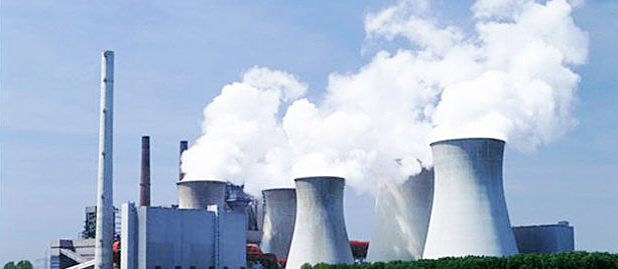Nuclear energy is
produced when atoms of a fissile material, such as uranium-235,
are split in a controlled chain reaction. The heat that
is generated is used to boil water, produce steam, and drive
a steam turbine. Physicist Bernard Cohen calculated the
useful lifetime of nuclear power in the billions of years
- longer than the life of the sun itself (which ultimately
powers other renewables), and subsequently stated that this
should qualify nuclear power as a renewable resource.
Of all the known energy sources, nuclear energy has perhaps
the lowest initial impact on the environment, especially
in relation to kilowatts produced, because nuclear plants
do not emit harmful greenhouse gases, require a relatively
small footprint, and effectively mitigate other impacts.
The downside is that it produces waste that is radioactive
for 10,000+ years, the storage of which presents some very
difficult and dangerous long term challenges.
Impacts on birds
Because the areas around nuclear power plants and their
cooling ponds are so clean, some plants have developed them
as wetlands that provide nesting areas for waterfowl and
other birds. In fact, such endangered birds as Osprey, Peregrine
Falcons, Bald Eagles, and Red-Cockaded Woodpeckers, have
found a home at nuclear power plants. Some nuclear plants
also have programs to protect species that are not endangered,
such as Eastern Bluebirds, Wood Ducks, American Kestrels,
Wild Turkeys, and Ring-necked Pheasant.
Clearly, there are
many huge potential negative impacts to birds and other
wildlife from radiation poisoning in the case of nuclear
catastrophe, but these are outside the scope of this document.
